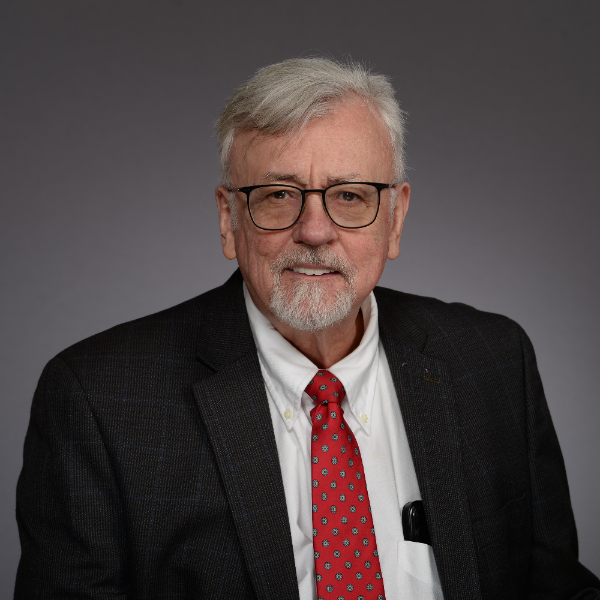Contact
Richard J. Zeman, M.S., Ph.D., is a research scientist in the field of neuromuscular disorders. He has conducted research that has been actively concentrated in the field of spinal cord injury (SCI) for the last 25 years. With decades of experience in academia and research, Dr. Zeman has made significant contributions to our understanding of muscular dystrophy and spinal cord injury.
While at NYU for his doctoral studies, Dr. Zeman was mentored by Alexander Sandow, who created the scientific field of Excitation-Contraction Coupling in muscle. After his fellowship, he joined the Department of Cell Biology and Anatomy at NYMC, where he has been investigating mechanisms of paralysis in spinal cord injury. He has published numerous peer-reviewed articles and has been an invited speaker presenting his work at conferences and symposiums worldwide. Teaching and mentoring students are also essential aspects of his work. Dr. Zeman also enjoys amateur paleontology as a member of the New York Paleontological Society.
Education
- Ph.D., Physiology, New York University
- M.S., Physiology, New York University
- B.S., Biology, Columbia University
- Fellowship, Muscular Dystrophy Association
- Postdoc, Neurology, Columbia University
Areas of Expertise
- Spinal Cord Injury
- Muscular Dystrophy
Research
Dr. Zeman’s research efforts have been focused on developing effective treatments for SCI in human patients by employing a standard animal model of experimental SCI for performing preclinical studies of efficacy. Several treatments emerged as potential therapeutic modalities with the ability to spare loss of cord tissue and promote recovery of locomotor function, and to alleviate the development of neuropathic pain. These included targeted stereotactic X-irradiation of the spinal cord injury site, use of the anabolic steroid, oxandrolone, a β2-agrenoceptor agonist, or the superoxide dismutase mimetic, tempol, as well as treatments for diabetic neuropathy. Stereotactic X-radiation was found to be particularly effective in treating an optimal therapeutic target within the injured spinal cord, demonstrating that this is a potentially efficacious and noninvasive method for treating spinal cord injury in human patients. β2-agonist treatment was also able to promote axonal regeneration in completely transected spinal cords. These studies have also included the implantation of neural stem cells into the spinal cord following injury as a modality to improve recovery from SCI. Although disparate, common features of these treatments have led to a novel hypothesis involving a role of glucotoxicity, the polyol pathway, and induction of the glutathione synthetic enzyme, γGCL, in the mechanism of neuroprotection in SCI. These studies demonstrate a previously unrecognized role of glucotoxicity in spinal cord injury and suggest new therapeutic strategies to oppose injury-induced paralysis.
Publications
- Zeman RJ, Brown AM, Wen X, Ouyang N, Etlinger JD. Tempol, a Superoxide Dismutase Mimetic, Inhibits Wallerian Degeneration Following Spinal Cord Injury by Preventing Glutathione Depletion and Aldose Reductase Activation. J Neurotrauma. 2024 Sep;41(17-18):2186-2198. doi: 10.1089/neu.2024.0137. Epub 2024 Aug 21. PubMed PMID: 39083435; PubMed Central PMCID: PMC11807894.
- Zeman RJ, Wen X, Ouyang N, Brown AM, Etlinger JD. Role of the Polyol Pathway in Locomotor Recovery and Wallerian Degeneration after Spinal Cord Contusion Injury. Neurotrauma Rep. 2021;2(1):411-423. doi: 10.1089/neur.2021.0018. eCollection 2021. PubMed PMID: 34738094; PubMed Central PMCID: PMC8563458.
- Friedman LK, Peng H, Zeman RJ. Cannabidiol reduces lesion volume and restores vestibulomotor and cognitive function following moderately severe traumatic brain injury. Exp Neurol. 2021 Dec;346:113844. doi: 10.1016/j.expneurol.2021.113844. Epub 2021 Aug 21. PubMed PMID: 34428457.
- Zeman RJ, Wen X, Moorthy CR, Etlinger JD. Therapeutic target for external beam x-irradiation in experimental spinal cord injury. J Neurosurg Spine. 2020 May 1;32(5):649-656. doi: 10.3171/2019.11.SPINE19305. Print 2020 May 1. PubMed PMID: 31899880.
- Ormond DR, Shannon C, Oppenheim J, Zeman R, Das K, Murali R, Jhanwar-Uniyal M. Stem cell therapy and curcumin synergistically enhance recovery from spinal cord injury. PLoS One. 2014;9(2):e88916. doi: 10.1371/journal.pone.0088916. eCollection 2014. PubMed PMID: 24558450; PubMed Central PMCID: PMC3928327.
- Brown A, Nabel A, Oh W, Etlinger JD, Zeman RJ. Perfusion imaging of spinal cord contusion: injury-induced blockade and partial reversal by β2-agonist treatment in rats. J Neurosurg Spine. 2014 Feb;20(2):164-71. doi: 10.3171/2013.10.SPINE13113. Epub 2013 Dec 6. PubMed PMID: 24313676.
- Ormond DR, Peng H, Zeman R, Das K, Murali R, Jhanwar-Uniyal M. Recovery from spinal cord injury using naturally occurring antiinflammatory compound curcumin: laboratory investigation. J Neurosurg Spine. 2012 May;16(5):497-503. doi: 10.3171/2012.1.SPINE11769. Epub 2012 Feb 10. PubMed PMID: 22324804.
Teaching Responsibilities
- Course Director: TCDM - Histology (General and Oral) Lecture and Laboratory
- Lecturer and Lab: SOM - Fundamental Principles of Life
- Lecturer: GSBMS - Lectures in Histology


